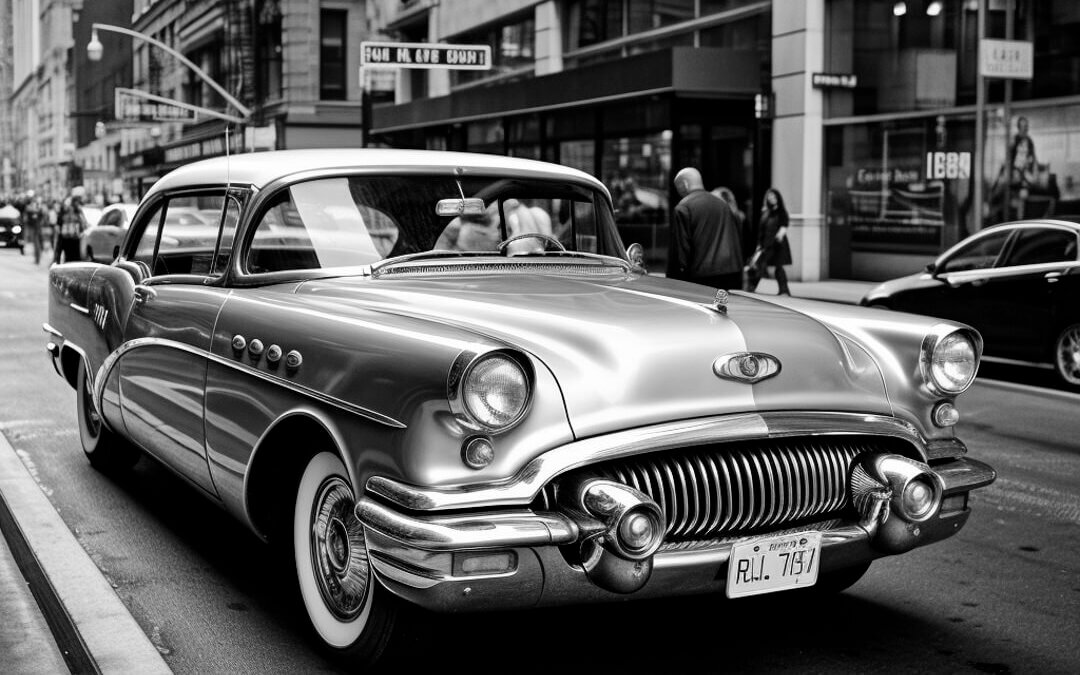The 1950s were an iconic era for automotive design. This period was marked by extravagant styling, innovative engineering, and an optimism that influenced every aspect of car design. It was a time when the automobile wasn’t just a mode of transportation; it was a symbol of status, freedom, and the American Dream. This article focuses on the automotive design of the 1950s, with particular attention to one of the era’s leading manufacturers: Buick.
The 1950s: An Era of Design Revolution
Post World War II, the United States experienced an economic boom, and there was a surge of demand for consumer goods. The automotive industry was no exception. Car designs evolved from the more conservative aesthetics of the 1940s to become larger, more powerful, and much more flamboyant. Designers experimented with new shapes, technologies, and materials, leading to the creation of some of the most iconic vehicles in automotive history.
Design elements like tail fins, chrome trim, and bright, two-tone paint jobs became popular features. These were the cars of the future, with design elements often inspired by the era’s fascination with space travel and the jet age. The influence of aircraft design was evident in many car models, with their sleek lines, aerodynamic shapes, and jet-inspired ornamentation.

Buick in the 1950s: A Leap into the Future
Buick, a division of General Motors, was at the forefront of this design revolution. Throughout the 1950s, Buick was known for producing upscale vehicles that offered a combination of style, luxury, and performance.
In the early 1950s, Buick introduced the “VentiPorts.” These were small, chrome-lined holes on the side of the hood, reminiscent of a jet’s exhaust ports. This design element not only enhanced the vehicle’s aesthetic appeal but also suggested power and speed. VentiPorts became a Buick signature feature, contributing to the brand’s unique identity.
Buick’s most iconic contribution to the 1950s, though, was arguably the ’55 Buick Special. This model was part of Buick’s reimagined lineup for 1955, where the cars featured more chrome, dramatic grilles, and the distinctive sweep-spear design – a bold, swooping line that ran from the front to the back of the car.
The ’55 Buick Special was a hit with consumers. It represented a perfect balance between luxury and affordability, making it one of the best-selling Buicks of the decade. The success of this model helped solidify Buick’s reputation as a maker of stylish, high-quality vehicles.
One more significant contribution from Buick was the introduction of the hardtop convertible style, starting with the 1949 Buick Roadmaster Riviera. Throughout the 1950s, this design became increasingly popular, eliminating the pillar between the front and rear windows and creating a sleek, uninterrupted line from the windshield to the rear window.
Conclusion
The 1950s were a golden era for automotive design, and Buick was a major player that contributed to the decade’s distinctive aesthetic. With their innovative designs and attention to detail, Buick vehicles captured the spirit of the era, combining style, luxury, and performance in a way that continues to resonate with car enthusiasts today. The legacy of 1950s Buick design serves as a reminder of a time when cars weren’t just a means of transportation, but a reflection of personality, aspiration, and the American Dream.
THe Real Truth
The article you just read about Buick’s automotive design in the 1950s was generated through a collaborative effort between two AI tools. The text was created by ChatGPT, an advanced language model developed by OpenAI, while the visuals were crafted by Midjourney 5.1. Each tool utilized its unique capabilities—ChatGPT’s text generation and Midjourney’s image creation—to produce a cohesive and informative piece. As advanced as these tools are, it’s important to remember that they rely on pre-existing data and don’t independently verify facts. Thus, it’s always recommended to corroborate the information they provide.
